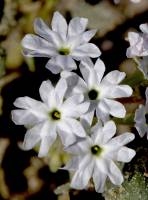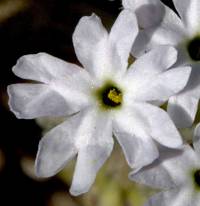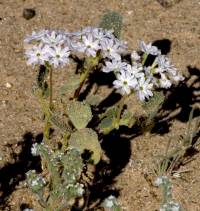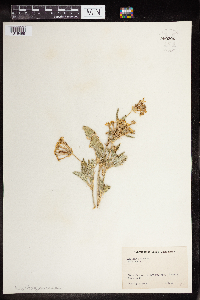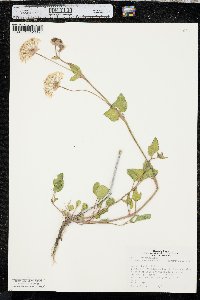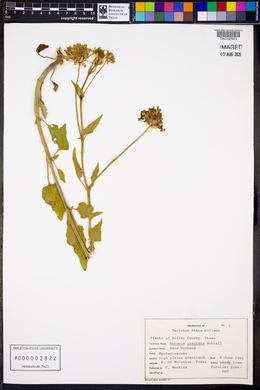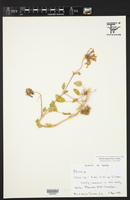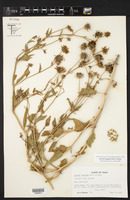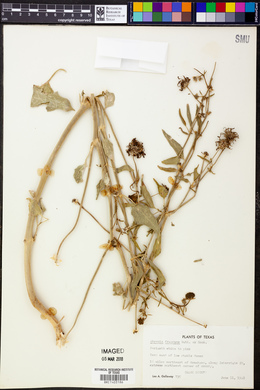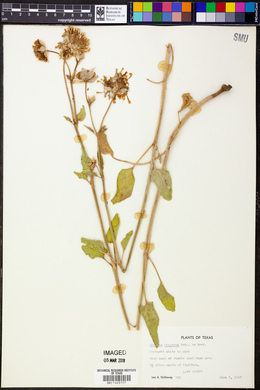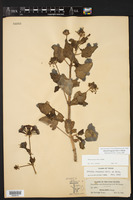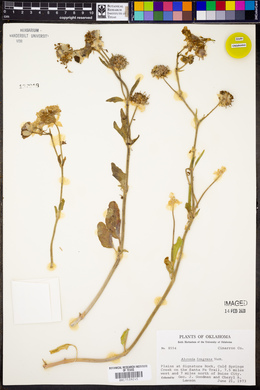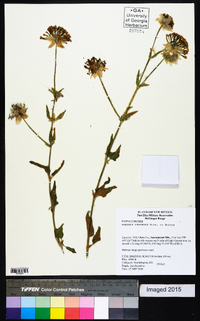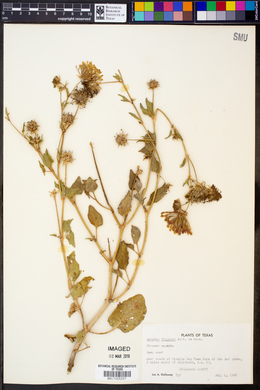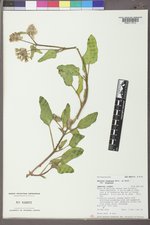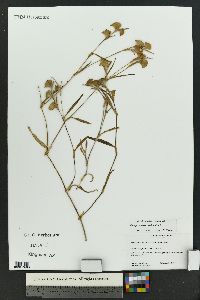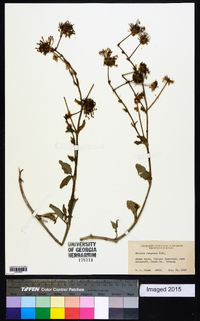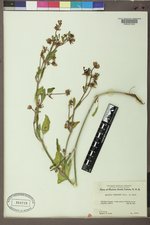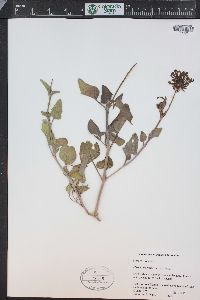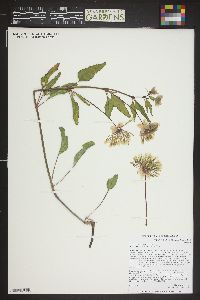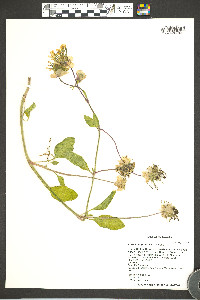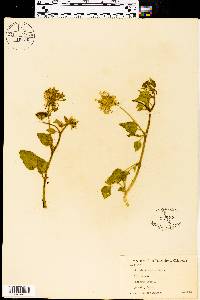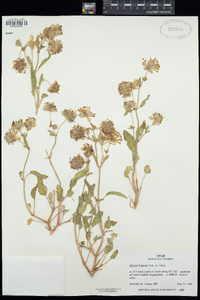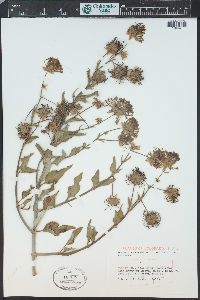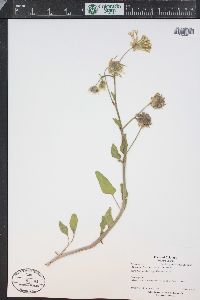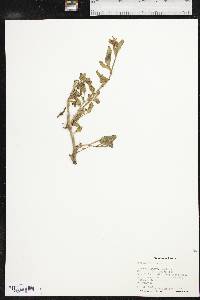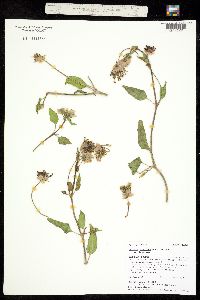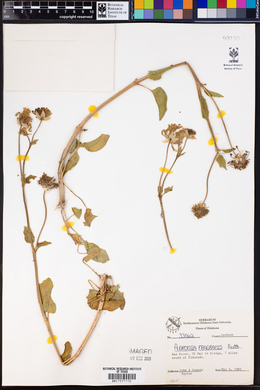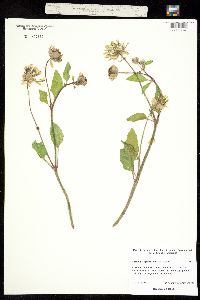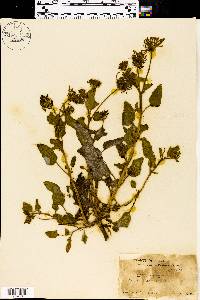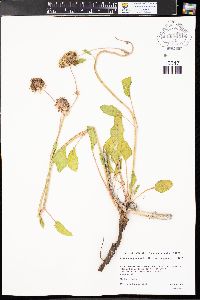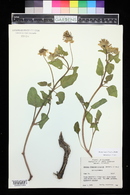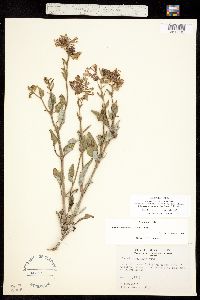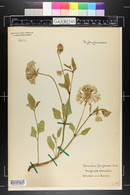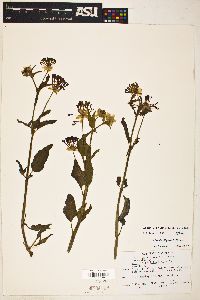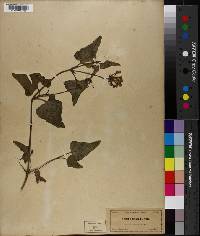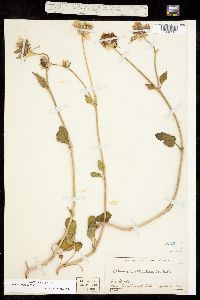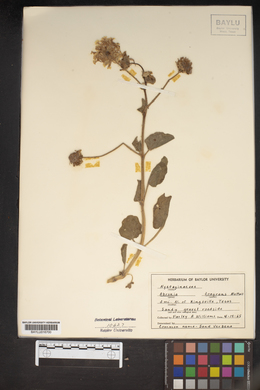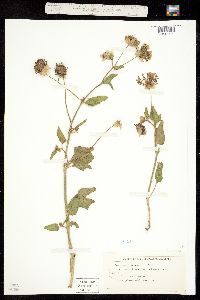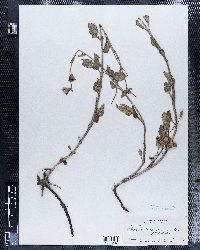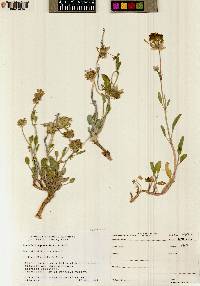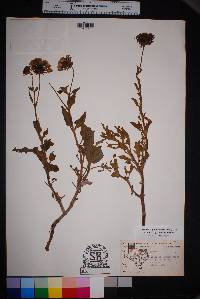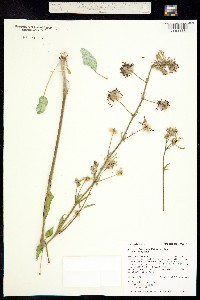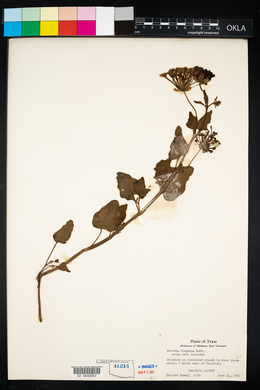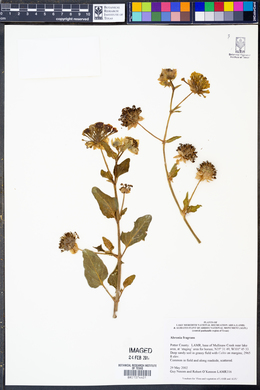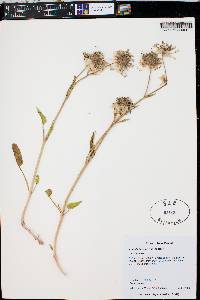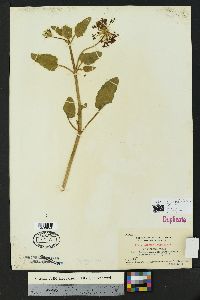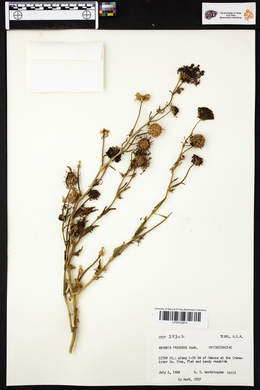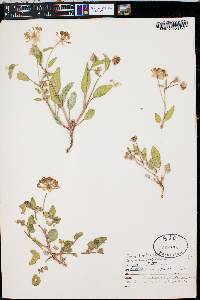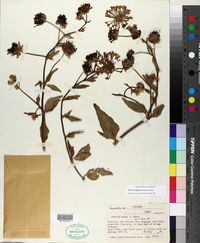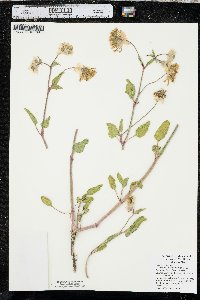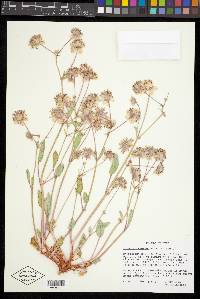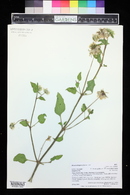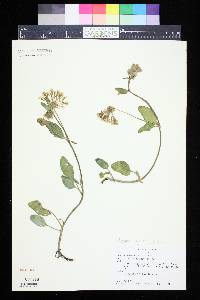
|
|
|
|
Family: Nyctaginaceae
Heart's-Delight, more...snowball sand verbena, snowball sandverbena, sweet sandverbena
[Abronia fragrans var. glaucescens A. Nels., moreAbronia nudata , Abronia robusta Standl., Abronia texana] |
Plants perennial. Stems procumbent to semierect, slightly to moderately branched, elongate, sometimes reddish at base and nodes, glandular-pubescent, viscid. Leaves: petiole 0.5-8 cm; blade ovate to triangular or lanceolate, 3-12 × 1-8 cm, margins entire to subsinuate and slightly undulate, adaxial surface glandular-pubescent, abaxial surface more densely and longer pubescent, or sometimes villous. Inflorescences: peduncle longer than subtending petiole; bracts linear-lanceolate to oval-ovate, 7-25 × 2-12 mm, scarious, glandular-puberulent to short villous; flowers 30-80. Perianth: tube greenish to reddish purple, 10-25 mm, limb white, (2-)6-10 mm diam. Fruits winged or not, fusiform and appearing deeply grooved when wingless, when wings not distorted, fruit ± cordate in profile, tapered at base, with prominent beak in broad notch at apex, 5-12 × 2.5-7 mm, indurate, rugose veined or, if wings distorted, fruit ± rhombic in profile and tapered at both ends, or obdeltate and truncate at apex, with prominent beak; wings 4-5, thick, narrow, not dilated at apex, cavities extending throughout; peripheral fruits often distorted, S-shaped in lateral view. Flowering spring-fall. Dry sandy soils, scrub and grasslands; 400-2000 m; Ariz., Colo., Kans., Mont., Nebr., N.Mex., N.Dak., Okla., S.Dak., Tex., Utah, Wyo.; Mexico (Chihuahua). Springer et al. 2008, McDougall 1973, FNA 2004, Allred 2012 Duration: Perennial Nativity: Native Lifeform: Forb/Herb General: Trailing to semi-erect perennial herb from a taproot, with stems 20-100 cm long; stems sparingly to moderately branched, greenish or straw colored, sometimes with reddish base and nodes, and covered in gland-tipped hairs,. Leaves: Most of the leaves clustered at the base of the plant, with scattered pairs of opposite leaves along stems; on petioles 0.5 to 8 cm long; blades ovate, lance-linear, or triangular, 2-9 cm long and 0.3-4 cm wide, with a squared-off or heart-shaped base, a round to pointed tip, and smooth or slightly wavy edges; upper leaf surface glandular-pubescent, and lower surface more densely pubescent. Flowers: Flowers clustered in dense rounded heads, the heads located at the tips of nodding stalks; sepals 5 per flower, lance-ovate, 3-6 mm long, pink to reddish, stipitate-glandular; petals fused into a long narrow urn-shaped tube, 6-9 mm long, with 5 reflexed lobes at the top, the petal color cream, pale yellow, or reddish, and drying yellowish brown. Fruits: Achenes 5-10 mm long, spindle-shaped to somewhat heart-shaped in outline, winged or ridged, with a prominent beak, and enclosed within the tube formed by the persistent fused petals. Ecology: Found in sandy soil, within desert, grassland, pinyon-juniper, and ponderosa pine communities; from 1,500-7,500 ft (457-2286 m); flowers June to August. Distribution: ID, WY, and SD, south to NV, AZ, NM, and TX; south to n MEX. Notes: This low, sand-loving perennial herb of the Great Basin desert and western Great Plains, is both attractive and distinctive. Look for the rounded clusters of white to pale pinkish tubular flowers, and slightly fleshy stems and leaves which are covered with gland-tipped hairs. Abronia elliptica is similar, and distinguished by its fruits, which have conspicuously dialated wings. Abronia nana is common in lower elevation habitats, often on exposed bedrock, and is distinguished by its tufted growth form, with smaller leaves, all of which are clustered at the base of the plant, and flowers on leafless stalks. Ethnobotany: Used ceremonially; taken internally to treat stomach troubles; and used topically to treat sores, boils, and insect bites. Etymology: Abronia is derived from the Greek word habros, meaning graceful or delicate; fragrans means fragrant. Synonyms: Abronia fragrans var. glaucescens, Abronia nudata, Abronia texana Editor: AHazelton 2017 |
This project was made possible in part by the Institute of Museum and Library Services [MG-70-19-0057-19].
Powered by Symbiota

